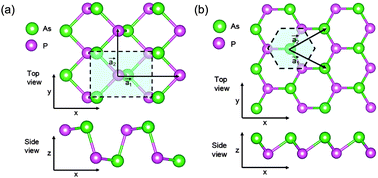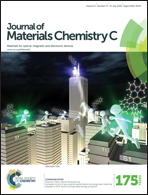Abstract
Finding novel 2D semiconductors is crucial to develop next-generation low-dimensional electronic devices. Using first-principles calculations, we propose a class of unexplored binary V–V compound semiconductors (PN, AsN, SbN, AsP, SbP and SbAs) with monolayer black phosphorene (α) and blue phosphorene (β) structures. Our phonon spectra and room-temperature molecular dynamics (MD) calculations indicate that all compounds are very stable. Moreover, most of compounds are found to present a moderate energy gap in the visible frequency range, which can be tuned gradually by in-plane strain. Especially, α-phase V–V compounds have a direct gap, while β-SbN, AsN, SbP, and SbAs may be promising candidates for 2D solar cell materials due to a wide gap separating acoustic and optical phonon modes. Furthermore, vertical heterostructures can be also built using lattice matched α(β)-SbN and phosphorene, and both vdW heterostructures are found to have intriguing direct band gaps. The present investigation not only broadens the scope of layered group V semiconductors but also provides an unprecedented route for the potential applications of 2D V–V families in optoelectronic and nanoelectronic semiconductor devices.


 Please wait while we load your content...
Please wait while we load your content...